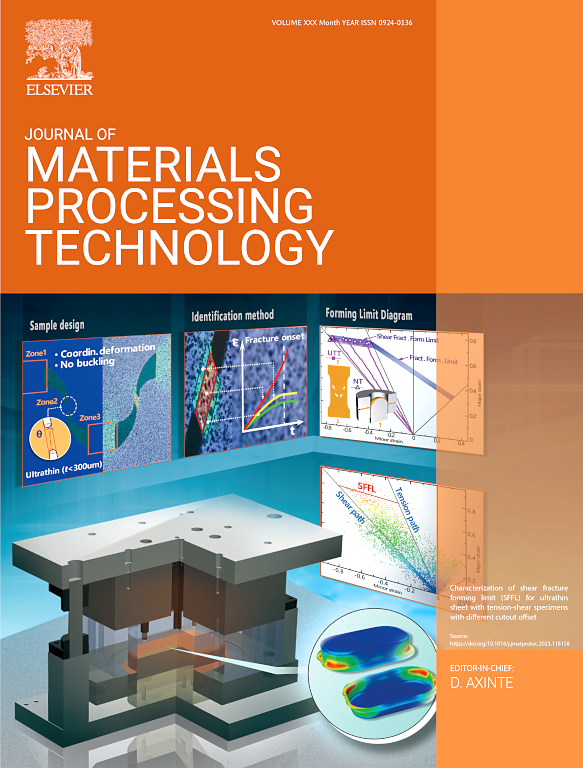Achieving high-quality copper alloy to nickel-based superalloy joint by isostatic high-pressure solid-state diffusion bonding
IF 6.7
2区 材料科学
Q1 ENGINEERING, INDUSTRIAL
Journal of Materials Processing Technology
Pub Date : 2025-01-24
DOI:10.1016/j.jmatprotec.2025.118747
引用次数: 0
Abstract
The high-performance joining of copper alloy and nickel-based superalloy to achieve high wear resistance, thermal conductivity and stiffness in the same structure is attracting increasing interest in various industries. However, directly joining to obtain high-quality joints of these two dissimilar materials is a challenge due to the significant differences in physical and chemical properties. In this study, a novel solid-state diffusion bonding method by employing isostatic high pressure has been proposed. The process parameters are optimized to achieve high-quality joints of a new material system (CuAgZn and GH600). The effects of bonding temperatures on microstructure evolution and mechanical properties at the joints under high-pressure conditions have been systematically investigated. The results show that reliable metallurgical joints, free of defects, have been successfully obtained under high isostatic pressure of 170 MPa, and some solid solution and precipitated phases have formed at the interface. The joint has exhibited a maximum tensile strength of 280.9 MPa (about 80 % of the copper alloy) with the bonding temperature of 660 °C. All the joints fractured adjacent to CuAgZn and exhibited brittle fracture features with ductile characteristics after tensile tests. Solution strengthening, precipitation strengthening, and recrystallization softening have been explained as the main mechanisms for the good joint strength. This study provides an effective strategy for achieving high-quality joints by isostatic high-pressure diffusion bonding for dissimilar materials.
求助全文
约1分钟内获得全文
求助全文
来源期刊

Journal of Materials Processing Technology
工程技术-材料科学:综合
CiteScore
12.60
自引率
4.80%
发文量
403
审稿时长
29 days
期刊介绍:
The Journal of Materials Processing Technology covers the processing techniques used in manufacturing components from metals and other materials. The journal aims to publish full research papers of original, significant and rigorous work and so to contribute to increased production efficiency and improved component performance.
Areas of interest to the journal include:
• Casting, forming and machining
• Additive processing and joining technologies
• The evolution of material properties under the specific conditions met in manufacturing processes
• Surface engineering when it relates specifically to a manufacturing process
• Design and behavior of equipment and tools.
 求助内容:
求助内容: 应助结果提醒方式:
应助结果提醒方式:


